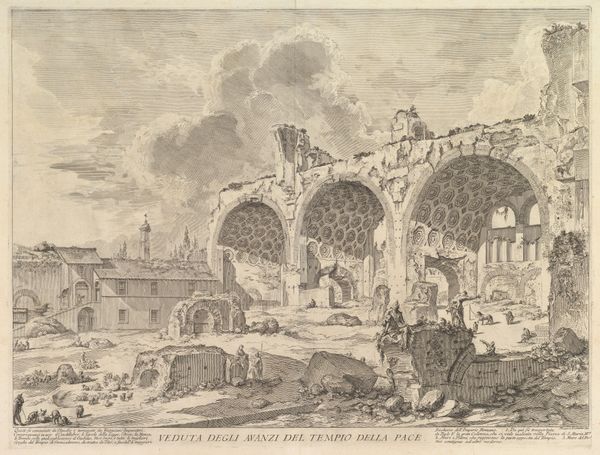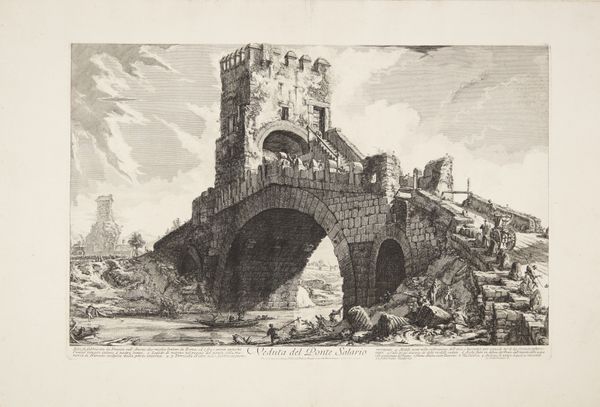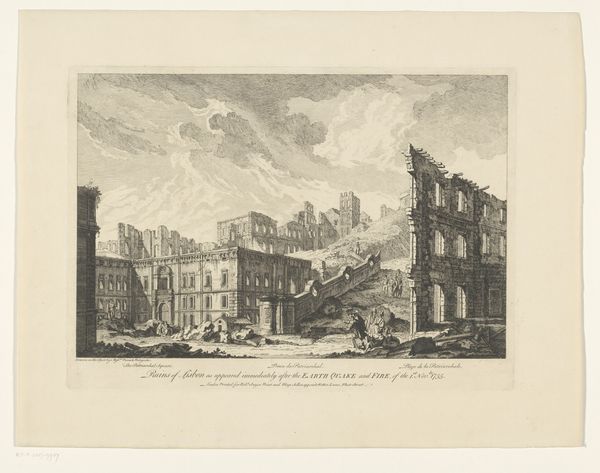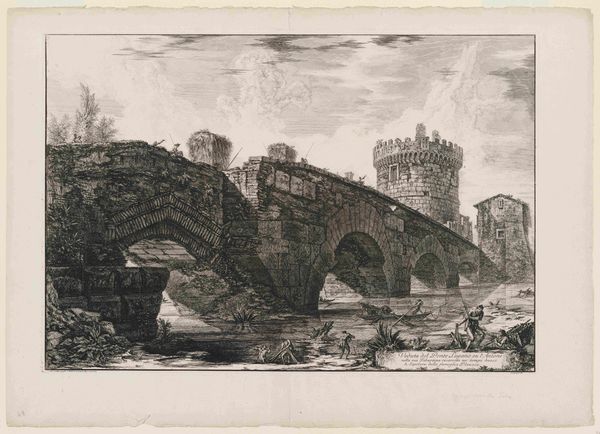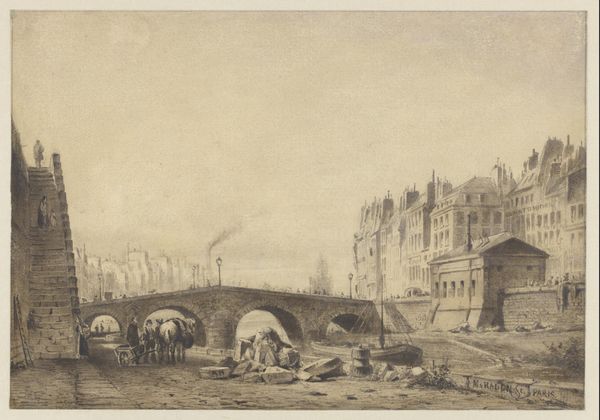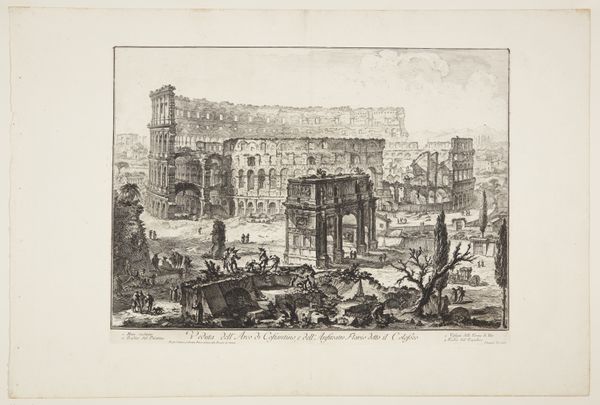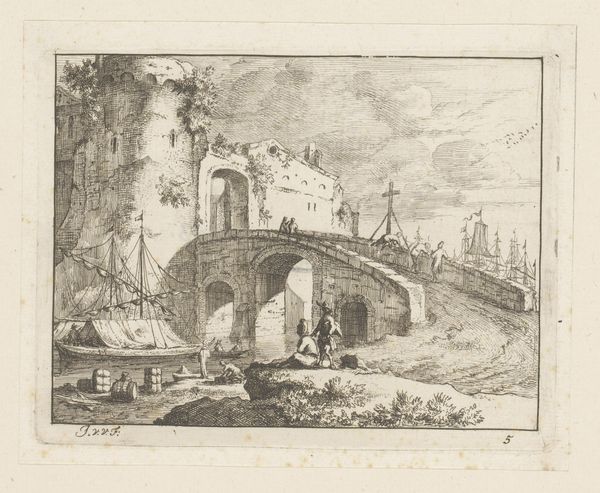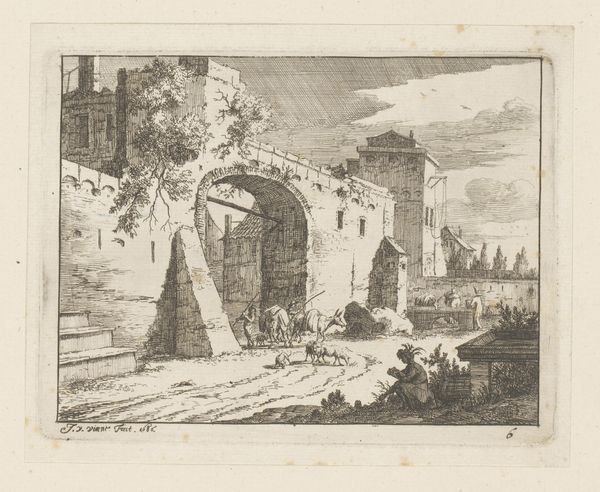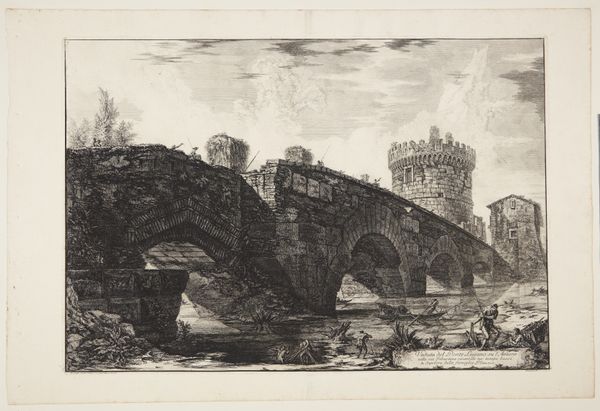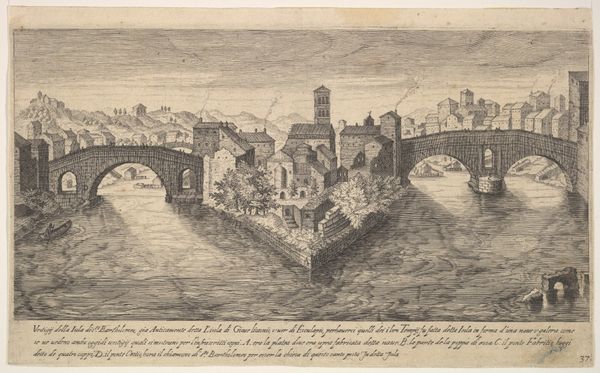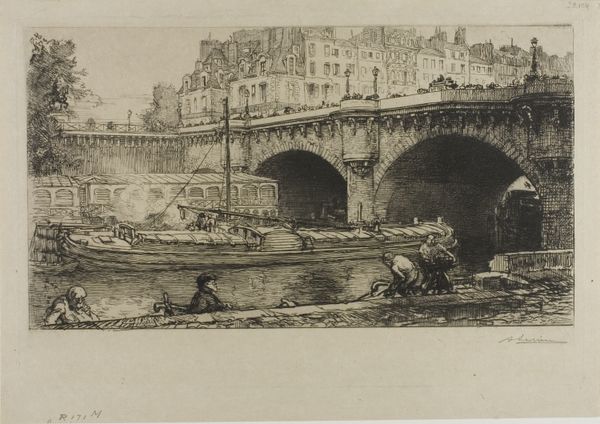
View of the Basilica of Maxentius and Constantine, erroneously called the Temple of Peace 1757
0:00
0:00
print, etching, engraving
#
neoclacissism
#
ink paper printed
# print
#
etching
#
old engraving style
#
romanesque
#
cityscape
#
history-painting
#
engraving
Dimensions: 415 mm (height) x 547 mm (width) (plademaal)
Editor: Here we have Giovanni Battista Piranesi's "View of the Basilica of Maxentius and Constantine, erroneously called the Temple of Peace," an etching from 1757. The detail is astonishing. It gives me this feeling of looking at a proud history slowly crumbling away. What jumps out at you when you look at this, from a symbolic perspective? Curator: The power of ruins! Notice how Piranesi has etched the Basilica – not as a relic of the past, but as a living monument imbued with the echoes of time. Consider how the fragmented arches reach skyward, still asserting their presence. The arches speak to a longing for an idealized, Neoclassical past, don’t they? But they're juxtaposed against the reality of decay. Editor: Absolutely. It's almost a push and pull between glorifying and lamenting. Is there something specific about Roman ruins that adds to that tension? Curator: Indeed. Rome held immense cultural weight. The Basilica, though misidentified in the title, would have been associated with power, law, and the very foundations of Western civilization. Look at the people Piranesi included; tiny, dwarfed by the immensity of the ruins. Doesn’t it trigger a reflection on the transience of human endeavor against the enduring power of symbols and collective memory? Editor: I hadn’t thought about it that way, but I see it now. So the architecture itself is a symbol… Curator: Exactly! A powerful, multi-layered symbol. The crumbling state evokes loss and reflection, while its imposing size signifies a lasting, immutable ideal. It becomes a stage upon which we project our own understanding of time, memory, and the cyclical nature of civilizations. How do you feel knowing the title is technically 'wrong'? Editor: Interesting that Piranesi called it the Temple of Peace; perhaps projecting hope or even irony onto the scene. This piece certainly offers more to contemplate than I initially thought. Curator: I agree! Now you see how the print asks you to ponder what is continuous within culture through its symbols of ruination and memory.
Comments
No comments
Be the first to comment and join the conversation on the ultimate creative platform.
